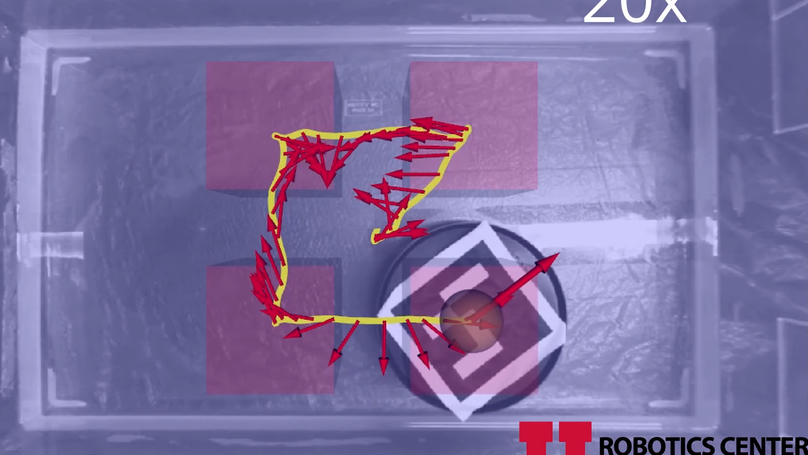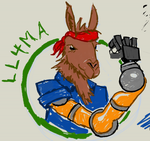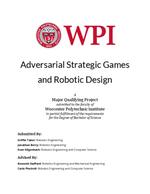Griffin Tabor
Assistant Teaching Professor
Worcester Polytechnic Institute
Biography
I am a teaching professor at the WPI Robotics Engineering Department.
Previously, at the University of Utah, I worked in the Utah Learning Lab for Manipulation Autonomy (LL4MA) under Dr. Tucker Hermans. I spent two years helping friends compete on the television show BattleBots End Game based out of New Zealand and BloodSport based out of Boston. I also mentor several teams that compete in the VEX Robotics Competition after having spent several years trying to compete fully autonomously against robots controlled by human drivers.
- Robotics
- Motion Planning
- Optimization
- Manipulation
- Education
-
Ph.D. in Computing Robotics Track, 2024
University of Utah
-
B.S. in Robotics Engineering, 2018
Worcester Polytechnic Institute
Teaching & Mentoring Experience
Mentoring and teaching students has been a long time passion of mine. For years I have helped answer student questions in online robotics chatrooms, enjoying watching students grow. In graduate school I turned towards more formal roles in teaching and mentoring.
Professional Experience
Projects
Featured Publications

This article extends recent work in magnetic manipulation of conductive, nonmagnetic objects using rotating magnetic dipole fields. Eddy-current-based manipulation provides a contact-free way to manipulate metallic objects. We are particularly motivated by the large amount of aluminum in space debris. We previously demonstrated dexterous manipulation of solid spheres with all object parameters known a priori. This work expands the previous model, which contained three discrete modes, to a continuous model that covers all possible relative positions of the manipulated spherical object with respect to the magnetic field source. We further leverage this new model to examine manipulation of spherical objects with unknown physical parameters by applying techniques from the online-optimization and adaptive-control literature. Our experimental results validate our new dynamics model, showing that we get improved performance compared to the previously proposed model, while also solving a simpler optimization problem for control. We further demonstrate the first physical magnetic manipulation of aluminum spheres, as previous controllers were only physically validated on copper spheres. We show that our adaptive control framework can quickly acquire useful object parameters when weakly initialized. Finally, we demonstrate that the spherical-object model can be used as an approximate model for adaptive control of nonspherical objects by performing magnetic manipulation of a variety of objects for which a spherical model is not an obvious approximation.

This paper extends recent work in demonstrating magnetic manipulation of conductive, nonmagnetic objects using rotating magnetic dipole fields. The current state of the art demonstrates dexterous manipulation of solid copper spheres with all object parameters known a priori. Our approach expands the previous model that contained three discrete modes to a single, continuous model that covers all possible relative positions of the manipulated object relative to the magnetic field source. We further leverage this new model to examine manipulation of spherical objects with unknown physical parameters, by applying techniques from the online-optimization and adaptive-control literature. Our experimental results validate our new dynamics model, showing that we get comparable or improved performance to the previously proposed model, while solving a simpler optimization problem for control. We further demonstrate the first physical magnetic control of aluminum spheres, as previous controllers were only physically validated on copper spheres. We show that our adaptive control framework can quickly acquire accurate estimates of the true spherical radius when weakly initialized, enabling control of spheres with unknown physical properties. Finally, we demonstrate that the sphericalobject model can be used as an approximate model for adaptive control of nonspherical objects by performing the first magnetic manipulation of nonspherical, nonmagnetic objects.

Dexterous magnetic manipulation of ferromagnetic objects is well established, with three to six degrees of freedom possible depending on object geometry1. There are objects for which non-contact dexterous manipulation is desirable that do not contain an appreciable amount of ferromagnetic material but do contain electrically conductive material. Time-varying magnetic fields generate eddy currents in conductive materials[2–4], with resulting forces and torques due to the interaction of the eddy currents with the magnetic field. This phenomenon has previously been used to induce drag to reduce the motion of objects as they pass through a static field[5–8], or to apply force on an object in a single direction using a dynamic field[9–11], but has not been used to perform the type of dexterous manipulation of conductive objects that has been demonstrated with ferromagnetic objects. Here we show that manipulation, with six degrees of freedom, of conductive objects is possible by using multiple rotating magnetic dipole fields. Using dimensional analysis[12], combined with multiphysics numerical simulations and experimental verification, we characterize the forces and torques generated on a conductive sphere in a rotating magnetic dipole field. With the resulting model, we perform dexterous manipulation in simulations and physical experiments.


